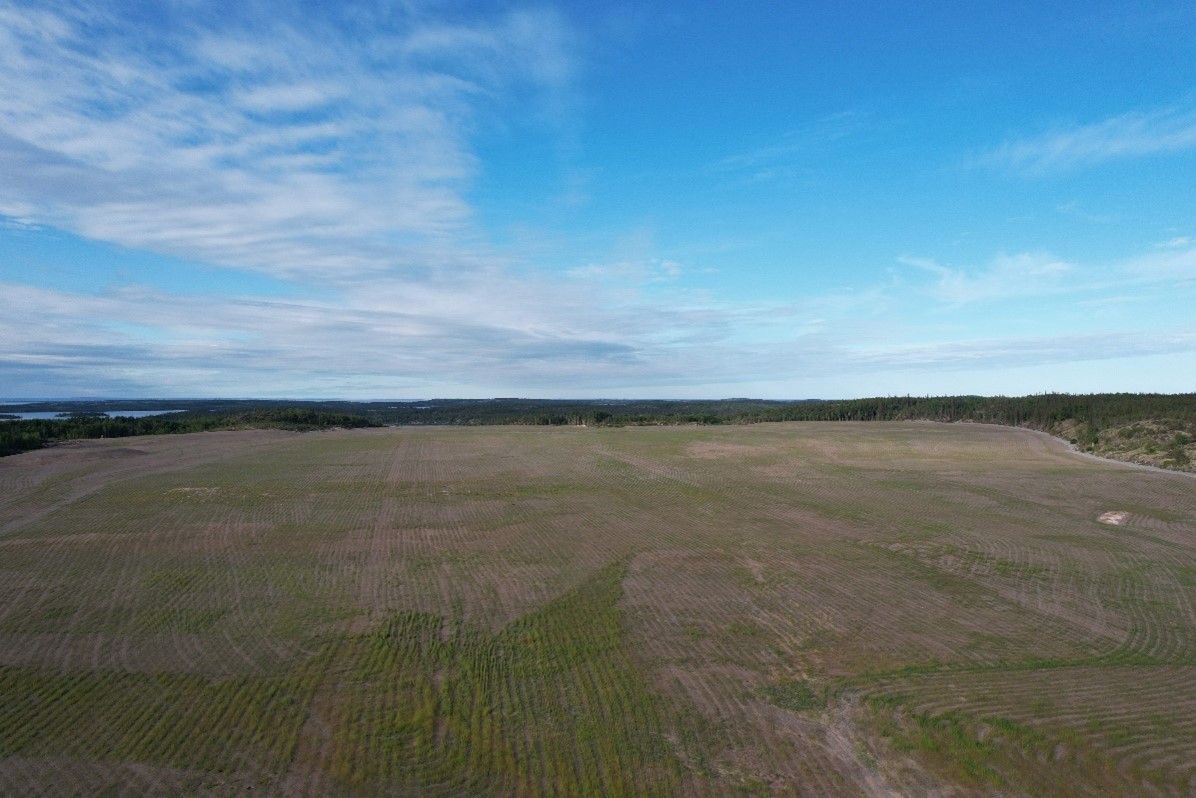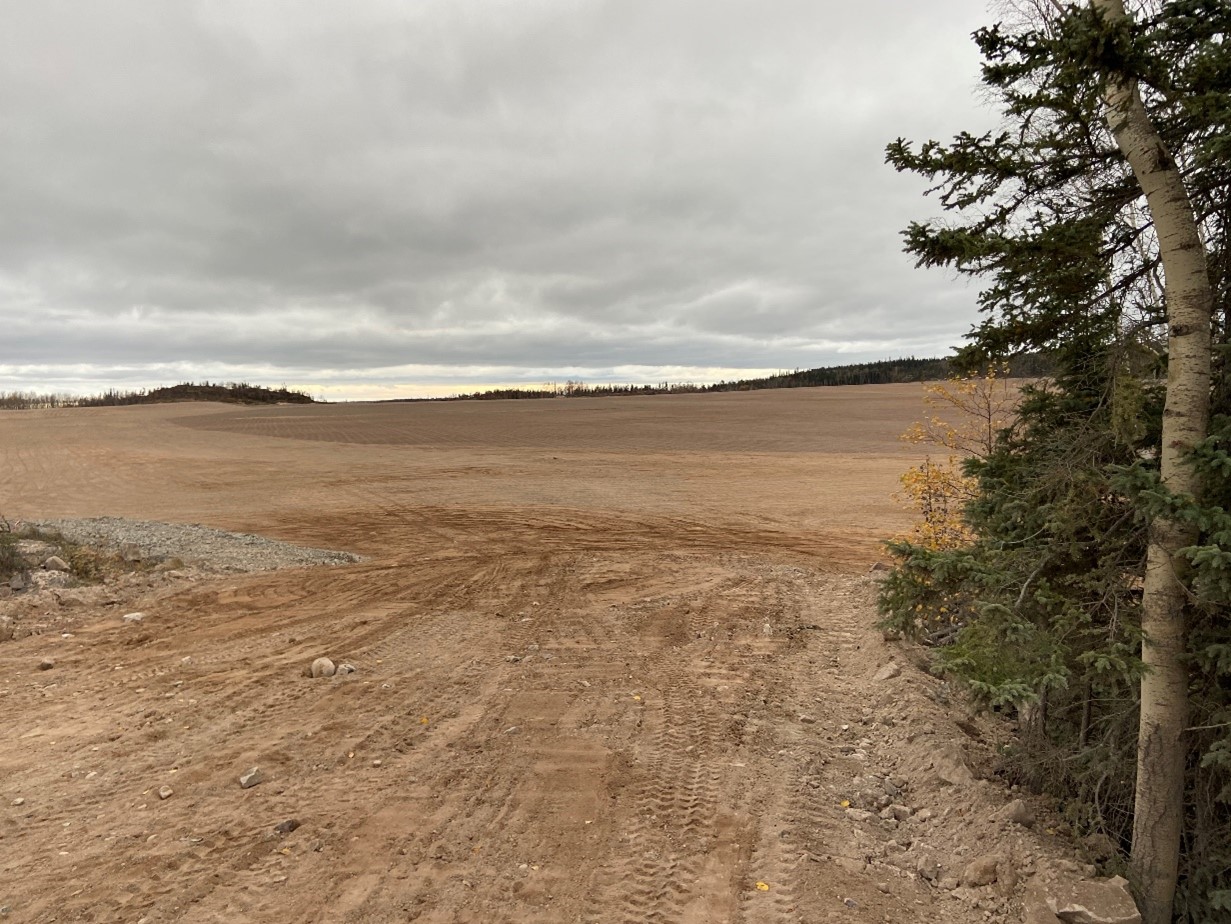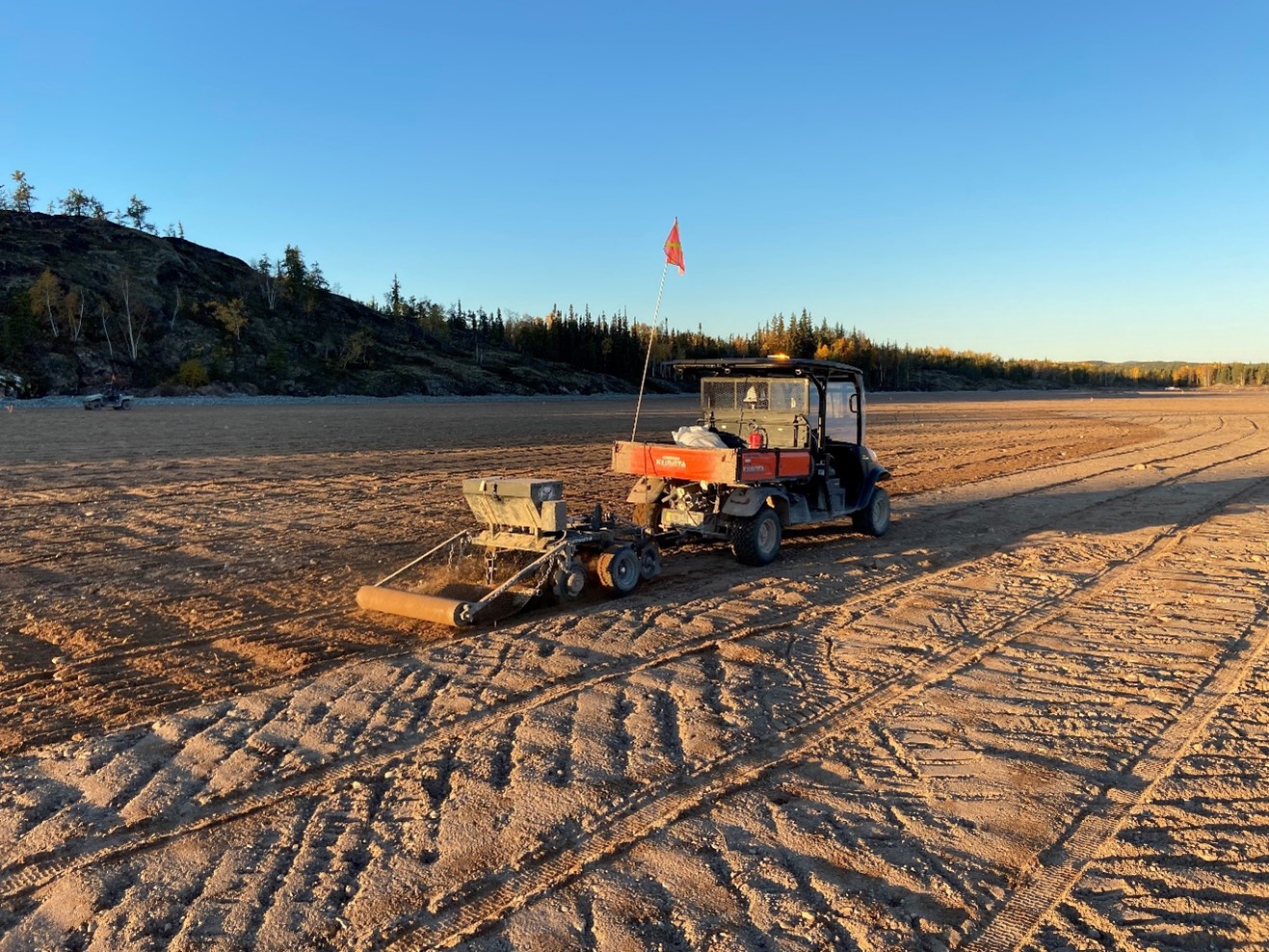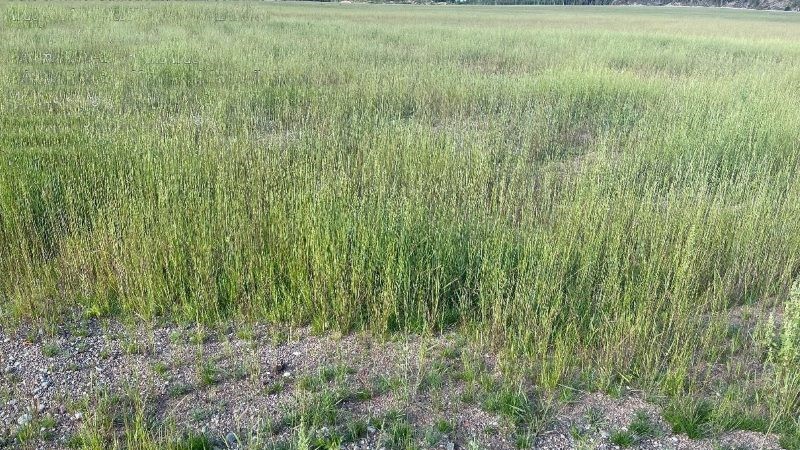
Remediation efforts at the former Gunnar Mine and Mill Site reached a new milestone last spring—with the first stage of revegetation coming to fruition.
Located on the north shore of Lake Athabasca, the long-abandoned uranium mine and mill has undergone a large environmental transformation over the past decade.
This remediation work is directed by SRC’s Environmental Remediation team and executed by local contractors. Gunnar is part of Project CLEANS (Cleanup of Abandoned Northern Sites)—a multi-year project focused on remediating 37 uranium mines in northern Saskatchewan that were abandoned by the companies that operated them in the 1950s and 1960s.
A cover system was constructed for Gunnar’s largest tailings areas over a five-year period. This cover, made of local material, was designed to contain the 4.4 million tonnes of tailings left behind from uranium processing. In September 2021, the cover was seeded with a custom mix of vegetation to prevent erosion.
In Spring 2022, SRC observed seed germination—a sign that new growth is coming back to the area for the first time in 60 years.
Environmental experts lend their knowledge
Michael Bendzsak is a Registered Professional Forester and Research Scientist in SRC’s Environment and Biotech Division. Over the years, Bendzsak has worked on various remediation projects for SRC.
“My background is a silviculture forester, and I’m very interested in working with natural processes to restore ecosystem function, while providing societal benefits,” says Bendzsak.
With over 20 years of experience, Bendzsak’s background has mainly been in forest management and applied forest research. His work in forest renewal has recently expanded to reclamation efforts.

Seeding new growth
Revegetation is one important step of the remediation process. Re-establishing local vegetation growth is critical to maintaining the protective tailings cover, while also facilitating the return of wildlife and encouraging plant diversity.
The Project CLEANS team consulted with local Indigenous Elders on selecting plant species and techniques and spent time in the field together. Elders provided input on plants that grow in the region and are used by Indigenous people. This information helped guide the selection of native plants to seed.
Hardy plant varieties are key to stabilizing the Project CLEANS sites and rehabilitating the ecosystem.
“In the case of Gunnar, emphasis is placed on promoting early successional plant communities—grasses in particular—to stabilize the site and allow other native vegetation to naturally re-populate the area,” says Bendzsak.
To establish the regrowth of native plants, SRC needed to cultivate the right environment at Gunnar. Once the soil cover was established, it was seeded with different varieties of native grasses. This was done before the first snowfall of 2021 to give the seeds ample moisture and time for germination in the spring.
After lying dormant for the winter, these seeds successfully sprouted in 2022—marking an exciting first step in the revegetation process.
SRC will continue this work for several years.
“As remediation work is completed, new areas will be ready for revegetation,” says Bendzsak. “This past fall, revegetation work focused on seeding the mine’s former waste rock piles and infrastructure areas.”
Reclaiming the area
Revegetation provides a continuous green cover of the engineered surfaces, preventing cover materials from eroding. The root systems of the seeded grasses will help keep the soil and gravel in place, extending the lifespan of the covering that encapsulates the tailings area.
Bendzsak says these hardy grasses are capable of incredible work.
“Seeded grasses actively anchor the cover with their root systems and are dynamic in that they can ‘self-repair’ in the event of an unforeseen future soil disturbance,” says Bendzsak.
Over time, the Gunnar Site will be naturally re-populated by shrubs and trees, bringing it closer to its former natural state.
Supporting a dynamic ecosystem
The Gunnar Mine and Mill Site consists of anthroposols—soils that have been drastically changed by human activity. Construction of the uranium mine profoundly disrupted the natural ecosystem and altered the soil profiles in the surrounding area.
Bendzsak says it’s not possible to undo all the past disturbances and restore the area to its pre-mining days. However, the remediation process introduces new soil profiles that cover the damage.
“We have also tasked these novel soils to mimic and support ecosystem function. It’s a tall order,” says Bendzsak.
The grasses and other plants chosen for the revegetation process help to kick-start new life into the area. The deep-rooted grass initiates soil carbon cycling while other plants, like legumes, fix atmospheric nitrogen to help future plant communities grow and thrive.
In time, the soil carbon and available nitrogen will increase and support a diverse and developing ecosystem.

Growing the future
SRC took a creative approach to the revegetation project.
The Gunnar Mine and Mill Site is located in a very remote area of northern Saskatchewan. The site can only be accessed by a winter road. Without that road, all supplies and personnel must be flown or barged in.
Gunnar’s isolated location poses several challenges to the remediation effort and makes it difficult to tackle revegetation using traditional methods.
“One of the more common revegetation methods, called hydroseeding, focuses on using specialized heavy machinery to blanket a given area with a hydraulic slurry of mulch and seed,” says Bendzsak. “It’s a popular method, as the mulch provides a good germinating environment, and plant responses to it are well known.”
But using this method at Gunnar would’ve required massive amounts of mulch and large volumes of water. Transporting machinery and supplies would have been incredibly difficult and quite costly.
SRC decided to use a different approach based on Bendzsak’s previous work.
“The previous research plots we established onsite showed it’s possible to establish native vegetation communities directly on freshly placed glacial till,” says Bendzsak. “We found native plant communities to be resilient and capable of establishing on these challenging sites, with a little help from slow-release fertilizers.”
Bendzsak and the team used two small plot seeders to revegetate the tailings area. First, they applied a top dressing of fertilizer. The fertilizer was incorporated into the soil to lock it in place and reduce runoff. A seed mixture was applied on top of the fertilized cover and tamped down into the soil.

Seeding success
SRC’s direct seeding approach was successful, and early observations have Bendzsak optimistic.
While most of the large tailing areas have been covered and seeded, and show successful growth, there is still work to be done. Abandoned infrastructure—that supported the old uranium operations—is still being remediated.
As work progresses, the team will follow with revegetation treatments until the entire site has been completed.
Over the next few years, Gunnar will slowly begin to support an ecosystem again.
Bendzsak says that vegetation surveys will help evaluate the long-term success of the project. These surveys will ensure that the area is stabilized and confirm that erosion has not occurred.
The team will also be able to monitor the new plant systems and measure the established vegetation communities.
“I’m immensely satisfied, both personally and professionally, when I visit an area we successfully revegetated,” says Bendzsak.
